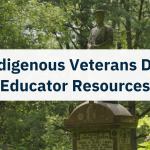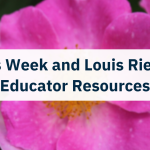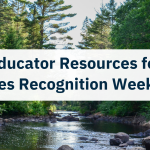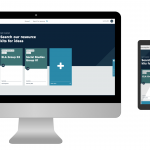Including Indigenous Perspectives in the Classroom
In preparation for the new school year, you may consider the best ways to include Indigenous perspectives and ways of knowing. You may also wonder how to do so appropriately and respectfully. It is important to remember that fully integrating Indigenous perspectives means more than adding Indigenous content. It is important to integrate them into learning experiences. You can begin with your classroom setup and extend it to the types of activities that you choose.
Integrating Indigenous Perspectives and Ways of Knowing
You may already know that a collaborative and democratic classroom is a pedagogical best practice. These concepts are important for holistically bringing Indigenous perspectives, ways of knowing, understanding, and learning into your classroom.
Collaboration
Understanding that everyone is an educator and learner is central to traditional Indigenous education models. This Indigenous perspective can make your learning activities more engaging and varied and offer learners more agency over their learning. A classroom where everyone works together enables learners to benefit from knowledge sharing. It provides the opportunity to be both a learner and an educator.
Democracy
Another central idea of traditional Indigenous education models is choice and ownership over learning. Teachings, especially stories, have the capacity to convey many different lessons. Certain lessons and concepts may alter from one learning context to another. What a learner extracts from teachings will depend on what is relevant to their life at the time. That may remind you of the saying, “You can lead a horse to water, but you can’t make it drink.” This idiom reflects the learning process. Learners must be ready to accept knowledge.
Inclusive Classrooms
Include your learners in decision-making. It can help them feel more control over what and how they learn. It makes the classroom more comfortable and makes learners more open to learning. Let’s look at some ways to set up your class to embody the ideals of collaboration and democracy.
Desk Placement
Desk placement can greatly impact learners’ perception of your class as collaborative and democratic. There are many possible desk configurations, but I will focus on three popular options: rows, groups of four, and U-shape. Depending on your class size, you may need to adjust the groupings. Each configuration signals something different to your learners about what they can expect from your class.
Rows
Rows signal learners that they will work mostly on individual tasks, not interact with others much, and listen to you speak often.
Groups
Groups indicate there will be lots of group work. Learners will share experiences, learn with their groups, and engage in project-style learning activities.
U-Shape
In a U-shape setup, learners will expect to work in pairs and as a whole class, have many class discussions, collaborate with the class as a whole, and have opportunities to learn in various ways.
Grouping desks or placing them in a U-shape creates a collaborative atmosphere. These configurations lend themselves well to discussions, group activities, and collaborative learning. They also help you avoid falling into the “sage on the stage” role and instead place you in the “guide on the side” role. Learners’ gazes focus on each other instead of the front of the room. This atmosphere lends itself to a more democratic and collaborative classroom.
Classroom Management
It is important to give learners a say in classroom management strategies. Creating classroom expectations with learners has gained ground for quite some time. It’s a great way to give your learners ownership over their learning environment and reinforce a collaborative and democratic classroom atmosphere.
Establish Cultural Norms
You can include learners in creating classroom expectations in various ways. The main point is that you and your learners come up with classroom expectations together. Teaching learners who have a different cultural background than yours has the added benefit of providing you with the opportunity to learn which behaviours are culturally acceptable in their community. Listing these cultural norms in classroom expectations and keeping them visible helps learners feel comfortable knowing the space represents and accepts their ways of being.
Structure and Consistency
We all know that classroom management doesn’t end with setting up classroom expectations. There are so many different and conflicting views, programs, and strategies that aim to help you create a safe, happy, and calm classroom with varying degrees of success. My goal isn’t to tell you how to run your class. You will manage it in a way that fits your teaching style. However, I want to reinforce what you likely already know: Structure and consistency are key.
These concepts may not seem to tie into collaboration and democracy. However, it can be challenging to balance structure and consistency in an open, collaborative, and democratic classroom. Still, it is a balance worth striving for. Structure and consistency actually make these other concepts possible. When you have a strong framework for your class set up and apply it, it is easier to provide space for collaboration and democracy. Structure helps learners be active, positive, respectful, and constructive class members.
Beginning of the Year Activities to Welcome Indigenous Perspectives
Beginning of the year activities can help you understand your learners’ strengths, weaknesses, likes, and dislikes. They can help inform your pedagogy and tailor the types of activities you include throughout the year. Encouraging learners to provide feedback early on creates an opportunity to work collaboratively throughout the year to create a comfortable learning experience for all.
3-2-1
3-2-1 activities are one of the most versatile activities you can use in your class. For a beginning of the year spin, ask questions that give you insight into what your learners do and do not enjoy. It can show you what behaviours you can expect from learners in the coming year. For example, you could ask your learners to share three activities they enjoyed last year, two types they didn’t enjoy, and one thing they wish educators knew about them. The answers to these questions can tell you which activities will engage learners best, which activities learners may act out during, and other information that may help you speak to and work with learners.
Word of the Day
Learning about learners’ interests is the quickest way to build a bond. At the beginning of the year, ask learners about their favourite thing to do. Then, ask them to tell you how to say this activity in their community’s language. Continue asking learners to teach you their language in a “word of the day” activity throughout the year. You can also set up a bilingual word wall including words, pictures, stories, etc. This type of activity can help build a relationship and a sense of trust in your classroom. This also reinforces that you are a learner, and they have much to teach you.
Remember: When completing any “word of the day” activities in a language you don’t know, check with other educators to ensure the words your learners are teaching you are correct and appropriate for a school setting. Many learners have robust senses of humour, and nothing is funnier than making an educator say something inappropriate!
Hopefully, these ideas help you begin including Indigenous perspectives and ways of knowing in the classroom. Happy start of the school year!



